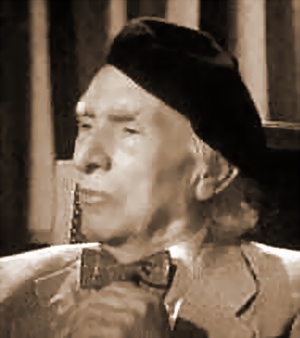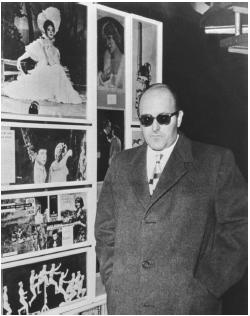A list of films produced in Argentina in 1956:

John Alton, born Johann Jacob Altmann, in Sopron, Kingdom of Hungary, was an American cinematographer of Hungarian-German origin. Alton photographed some of the most famous films noir of the classic period and won an Academy Award for the cinematography of An American in Paris (1951), becoming the first Hungarian-born person to do so in the cinematography category. He also worked as a director during the Golden Age of Argentine cinema.

The Harder They Fall is a 1956 American boxing film noir directed by Mark Robson, produced and written by Philip Yordan, based on Budd Schulberg's 1947 novel. It was Humphrey Bogart's final film role. It received an Oscar nomination for Best Cinematography, Black and White, for Burnett Guffey at the 29th Academy Awards.
León Klimovsky Dulfán was an Argentine film director, screenwriter and producer notable for his work during the classical era of Argentine cinema. He was known mainly for his work in Spanish cinema during the 1960s and '70s.
This is an index to pages listing Argentine films ordered by year of release. For an A-Z list, see Category:Argentine films.

Enrique Muiño was a classic Spanish-Argentine actor who appeared in film between 1913 and his death in 1956. He is one of the greatest actors of the Golden Age of Argentine cinema.

Dark River is a 1952 Argentine drama film directed by Hugo del Carril, starring del Carril, Adriana Benetti and Raúl del Valle. It is based on a novel by Alfredo Varela. The storyline is about exploitation of peons, and the film has a populist message that ties in with the director's sympathy for Peronism. The film won the Silver Condor Award for Best Film.

Kurt Landesberger was an Austrian born Argentine film director notable for his work during the classical era of Argentine cinema.

Luis Bayón Herrera was a Spanish film director and screenwriter who worked in Argentine film of the 1940s and 1950s. He was "one of the most important directors of the Golden Age of Argentine cinema".

Mario Soffici was an Italian-born Argentine film director, actor and screenwriter notable for his work during the Golden Age of Argentine cinema.

Pierre Bruno Hugo Fontana, otherwise known as Hugo del Carril, was an Argentine film actor, film director and tango singer of the Golden Age of Argentine cinema.

Julio Saraceni was a prolific Argentine film director whose career in the Cinema of Argentina as a movie director spanned six decades. He was an important director during the classical era of Argentine cinema.

Enrique Carreras was a Peruvian-born Argentine film director, screenwriter and film producer. He was one of the most prolific film directors in the history of the cinema of Argentina and a prominent figure of the classical era of Argentine cinema.
Julio Hirsch, known professionally as Julio Chávez, is an Argentine film, theater and television actor.

Leo Fleider was a Polish born Argentine film director and screenwriter, notable for his work during the classical era of Argentine cinema.

Armando Bó was an Argentine film actor, director, producer, screenwriter and score composer. He began his career as an actor and producer during the Golden Age of Argentine cinema of the 1930s and 1940s. In 1956, Bó met Isabel Sarli and cast her as the lead actress in his film Thunder Among the Leaves (1957), in which she made the first full frontal nude in the history of Argentine cinema. Bó and Sarli became both romantic and commercial partners, and the duo turned to the sexploitation genre in the 1960s and 1970s, these films being considered emblematic of the genre.

Leopoldo Torre Nilsson, also known as Leo Towers and as Babsy, was an Argentine film director, producer and screenwriter.

Lucas Demare was an Argentine film director, screenwriter, and film producer notable for his work during the classical era of Argentine cinema and beyond.

The Bitter Stems is a 1956 Argentine film noir directed by Fernando Ayala, one of the last films of the classical era of Argentine cinema. The screenplay, written by Sergio Leonardo, was based on a novel by journalist Adolfo Jasca.